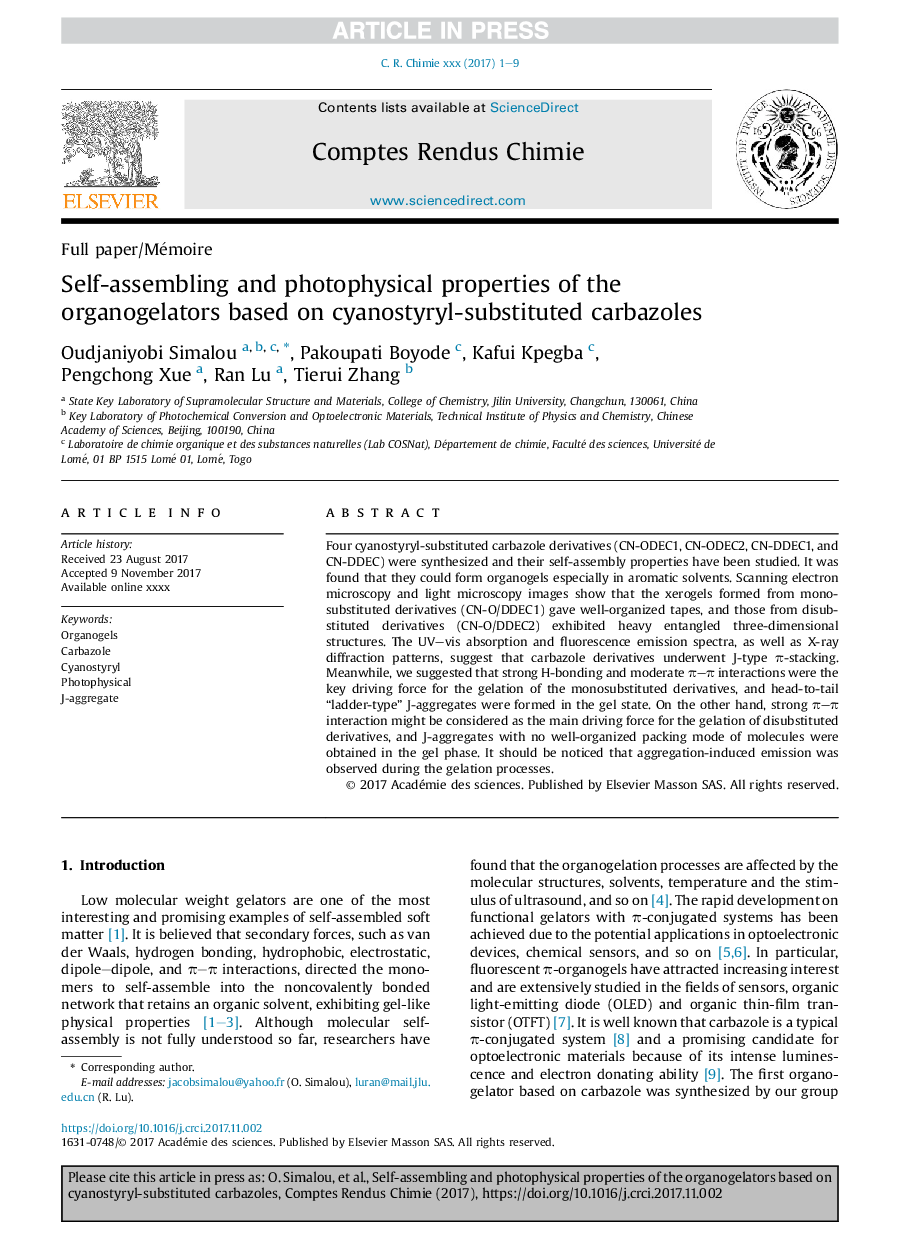| Article ID | Journal | Published Year | Pages | File Type |
|---|---|---|---|---|
| 6594493 | Comptes Rendus Chimie | 2018 | 9 Pages |
Abstract
Four cyanostyryl-substituted carbazole derivatives (CN-ODEC1, CN-ODEC2, CN-DDEC1, and CN-DDEC) were synthesized and their self-assembly properties have been studied. It was found that they could form organogels especially in aromatic solvents. Scanning electron microscopy and light microscopy images show that the xerogels formed from monosubstituted derivatives (CN-O/DDEC1) gave well-organized tapes, and those from disubstituted derivatives (CN-O/DDEC2) exhibited heavy entangled three-dimensional structures. The UV-vis absorption and fluorescence emission spectra, as well as X-ray diffraction patterns, suggest that carbazole derivatives underwent J-type Ï-stacking. Meanwhile, we suggested that strong H-bonding and moderate Ï-Ï interactions were the key driving force for the gelation of the monosubstituted derivatives, and head-to-tail “ladder-type” J-aggregates were formed in the gel state. On the other hand, strong Ï-Ï interaction might be considered as the main driving force for the gelation of disubstituted derivatives, and J-aggregates with no well-organized packing mode of molecules were obtained in the gel phase. It should be noticed that aggregation-induced emission was observed during the gelation processes.
Related Topics
Physical Sciences and Engineering
Chemical Engineering
Chemical Engineering (General)
Authors
Oudjaniyobi Simalou, Pakoupati Boyode, Kafui Kpegba, Pengchong Xue, Ran Lu, Tierui Zhang,
